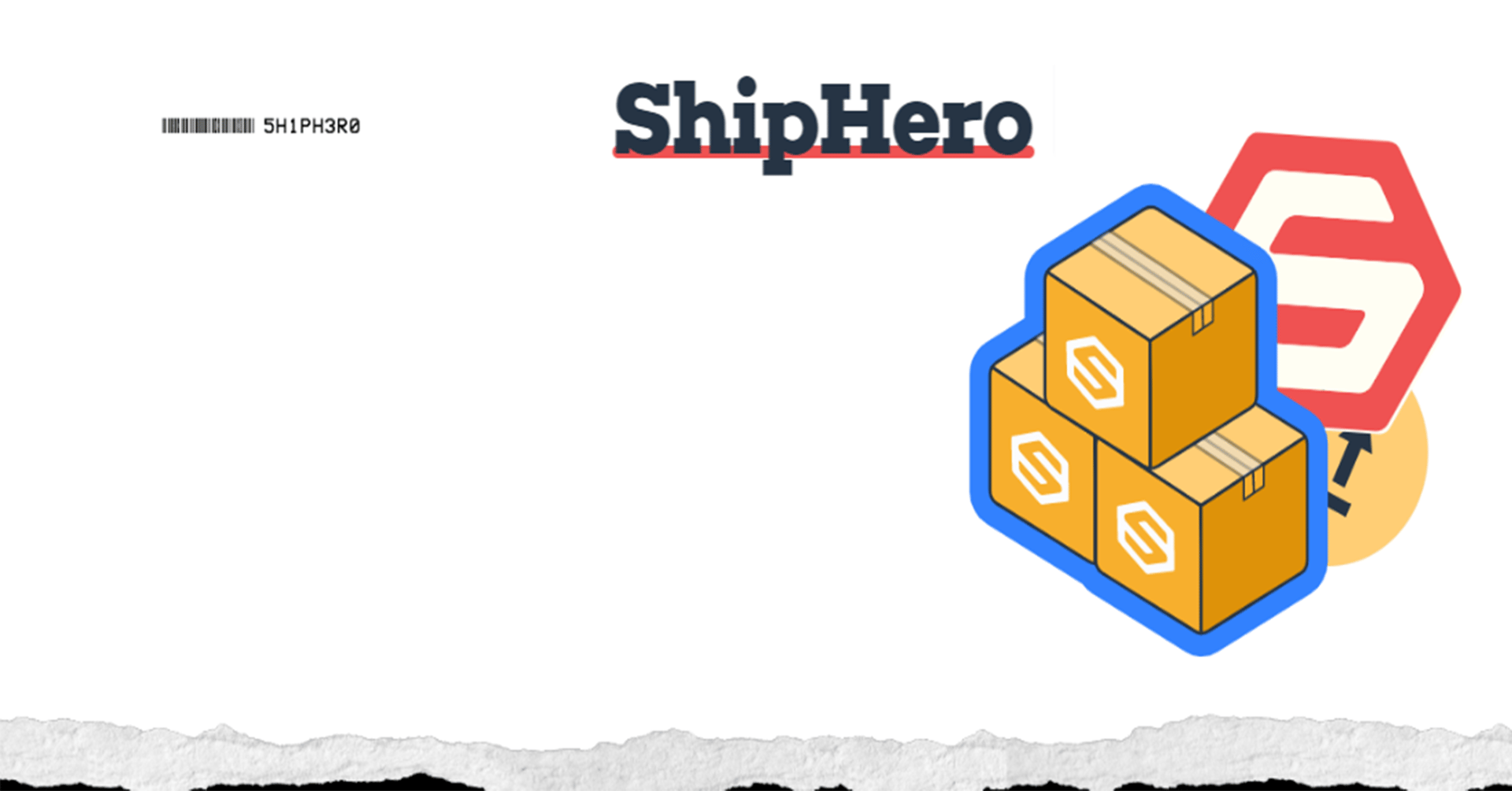At Learners.ai, we work with marketing, sales, and customer service teams to automate revenue operations, automate marketing, enable sales teams, integrate systems, and provide analytics to make business decisions. In this case, study, learn how we helped software and order fulfillment company ShipHero benefit from the pandemic-induced e-commerce boom.
When ShipHero started working with us in the middle of 2021, the company had just received a $50 million Series A investment, and revenues were going through the roof. Things were good. ShipHero was booming.
With this new investment came new leadership and a mandate to scale operations and take advantage of the recent pandemic-fueled growth in e-commerce — now a $432 billion industry.
But the company was still experiencing challenges. Cynthia LaRue, ShipHero's Vice President of Marketing, connected with us to iron out those kinks.
ShipHero has two business lines. They offer outsourced fulfillment that includes seven warehouses across North America and end-to-end shipping software that makes it easy for e-commerce brands to manage their own warehouses, offered through a SaaS model. One of ShipHero's most significant partners is Shopify, which uses the company's warehouses and shipping networks for order fulfillment as well as refers other customers who are using Shopify’s platform.
With both of these business lines came unique challenges for growth.
The Problem
When we first spoke with Cynthia, employees at ShipHero were working in silos. Data existed in various locations, and different teams couldn't access it. It was a RevOps nightmare. The company had all the data it needed to improve services, but its systems operated independently of one another. There was no single source of truth. There was no understanding of data. Everyone was using ShipHero's CRM system (HubSpot) differently.
There was a huge disconnect.
ShipHero required a solution that would integrate data from both sides of its business so marketers could generate leads, turn over conversions to the sales departments, and take advantage of the increased lead flow.
We were up for the challenge.
Working Out a Solution
We started by identifying the problems that existed over at ShipHero. Despite the company's (and the entire e-commerce industry's) phenomenal growth over the last year, it still had an incomplete view of its own business. Marketers couldn't see how conversions were happening and clearly identify who the actual customers were. Sales teams couldn't nurture those conversions. Departments struggled to share information and collaborate.
Ultimately, Cynthia wanted to solve these problems quickly, and we were more than happy to help.
We came to ShipHero and looked at all of its internal systems. Then we brainstormed how to unite sales, marketing, and other business functions for better revenue intelligence. We tried to work out how marketers could capture and track inbound and outbound leads and visualize conversions.
It's hard to come into a company that's rapidly growing and then make changes to its systems and processes. ShipHero was doubling its revenue. Both of its businesses were growing really fast. So we had to build something sustainable. We had to create something that would grow at the same pace the company did. We had to design something that would take advantage of the surge in e-commerce sales since the pandemic. We had to synthesize all platforms, people, and processes to generate revenue intelligence for better business insights.
The Solution
ShipHero was already a HubSpot customer when we started working with them, and team members understood the value of this CRM. However, employees used the system sporadically for one reason or another. We've always been big HubSpot supporters, but the challenge here was to make the platform work for ShipHero, not us. How could we configure HubSpot so ShipHero could better understand its nearly 20,000 customers? How could we optimize everything so all the teams were focused on growth and serving customers, not maintaining their CRM.
We started with a comprehensive HubSpot Technical Audit and looked at all the HubSpot data and system configurations ShipHero had set up. Then we examined how team members engaged with the platform. We analyzed system settings. We investigated website CTAs, connections forms, and custom properties. We viewed HubSpot APIs, HubSpot integrations, HubSpot Webhooks, and more.
Then we tore HubSpot up and started putting it back together.
Our team:
- Cleaned up the data that existed in HubSpot.
- Met with teams that used HubSpot in extensive working sessions.
- Worked with those teams to understand their specific requirements and challenges when using HubSpot.
- Worked closely with VPs of marketing and sales from both sides of ShipHero's business, including Cynthia.
- Came up with other revenue operations strategies that would help both sides of ShipHero's business.
- Integrated all apps and internal systems to always be in sync with HubSpot serving as the central Customer Data Platform.
Our goal was simple: To align ShipHero's business processes with its HubSpot CRM data, meaning everyone in the company has a single source of truth for revenue operations data. This objective could break down the data silos that existed and make it easier for ShipHero to move customers through its sales and marketing processes.
How We Did It
We created several custom integrations to ensure that HubSpot was capturing all the customer interactions, regardless of where those took place.
Partnership Channel
Previously, the company couldn't identify where leads originated. So we created a process that tracks the source of partnerships and referrals by automatically tagging each partner with its own revenue share agreement. By attaching revenue share to each deal, it's now easier to recognize lead source as soon as they come in.
New Workflows
By converting and optimizing the forms on the company's website (including HubSpot forms), marketers now have greater insights into leads. Plus, those leads can reach the right salesperson. The VP of sales will receive a notification when a particularly profitable lead comes from a form.
LinkedIn Integration
We also integrated HubSpot with other systems, such as LinkedIn using Dux-Soup. Now sales teams can prospect outbound leads through LinkedIn messages and track these leads and their LinkedIn activity directly in HubSpot as activities. This has given a great boast to the sales team for their outbound prospecting.
Stripe Integration
We wanted to align marketing and sales and all the internal systems these departments use. One way we achieved this goal was by syncing with ShipHero's internal database and Stripe so we could get capture revenue attribution in addition to lead conversions. While different departments at ShipHero had access to this data before we worked with the company, that data existed in silos. So we made it easier for the whole organization to view financial data through the same lens, and make sure they continue to do so through daily synchronization.
Dashboards and Reports
Dashboards and reports are the lifeblood of any scaling business and ultimate goal of any RevOps project. So we created dashboards and reports based on various teams' specific requirements. By listening to each team's needs, we delivered a set of custom dashboards that tracks and provide the right metrics to the right people at the right time. We also combined multiple sources for reporting. For instance, we created a custom dashboard for one team that connects Google Analytics data with HubSpot data.
"I think delivering that dashboard for the client was the big winning moment for us," says a Learners.ai company spokesperson. "We felt like we had just won a marathon. It was a long journey where we started with hundreds of messy custom properties and disparate systems but ended with a beautiful dashboard. It was a proud moment for us to be part of ShipHero’s RevOps Transformation."
Results
Our revenue operations expertise has helped ShipHero solve these challenges:
- Make data more accessible for all teams on both sides of its business.
- Help marketers capture, track, and nurture leads.
- Help sales teams generate more revenue for the company
- Remove the siloed data that held ShipHero back
- Make HubSpot a single source of data for revenue operations, sales enablement, and other business functions
- Align sales and marketing objectives
- Improve the customer experience
- Be able to scale quickly to meet demand
We did this by using our data-driven approach to RevOps and systems integration capabilities.
Before You Go
Want to learn more about the revenue intelligence methods used in this case study? Check out these articles for more information:
- A Guide to Improving RevOps with Revenue Intelligence
- Understanding and Embracing RevOps Strategies
- What is RevOps and Why Can't Financial Services Thrive Without It?
Do you need assistance removing data from silos or improving revenue operations in your organization? Learners.ai is a HubSpot partner with over 15 years of tech strategy and integration expertise to help rapidly scaling companies. We want to make RevOps simple and results-driven. Get in touch with our team today for a consultation.



